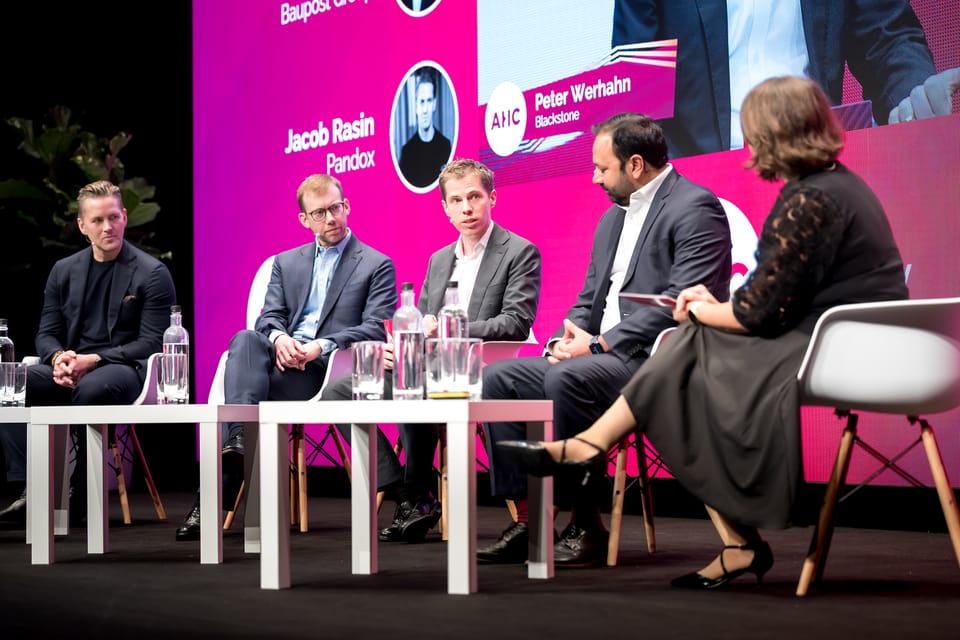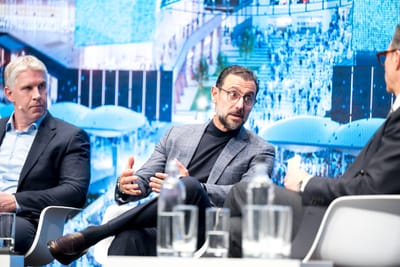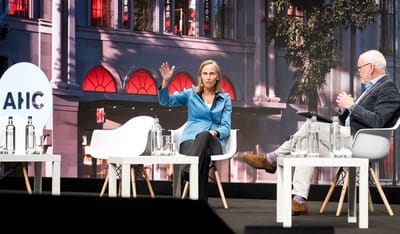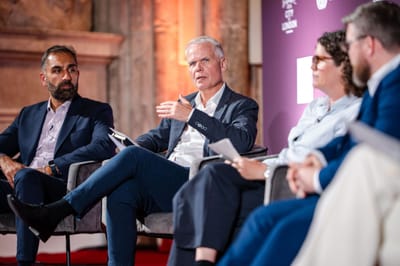
Speakers: Saurabh Chawla (Westmont Hospitality), Peter Werhahn (Blackstone), Jacob Rasin (Pandox AB), JJ Lenhart (The Baupost Group), chaired by Carine Bonnejean (Christie & Co).
AHC 2025, Manchester: Headline volumes are down, but dealmaking has not stopped. The mix has shifted to single assets, domestic buyers, and structures that fit today’s earnings. Here is where capital is moving and why.
Market snapshot: slower headlines, faster exchanges
UK hotel transactions in H1 were down about 75 percent year on year. The UK’s share of European hotel deals fell from 39 percent in 2024 to 11 percent year to date. London traded roughly 350 million versus 1.65 billion a year earlier, the regions about 730 million versus 2.5 billion. The mix flipped to 80 percent single assets. Yet July and August delivered record exchanges, proof that pricing clears when assets are valued on current NOI and the structure matches risk.
Domestic buyers took about 60 percent of H1 deals, up from 35 percent last year. Cross-border, especially US, softened given portfolio scarcity and spring volatility. Insolvencies have ticked up but remain local. Temporary supply removal through government contracts is tightening some city markets, which supports pricing for open stock.
What the investors are doing now
Blackstone’s Peter Werhahn was the most upbeat on fundamentals. “We are relatively bullish,” he said, citing resilient leisure across their estate and strengthening mid-week corporate at Village Hotels. The platform angle matters. Blackstone is layering in add-on single assets where encumbrances can be resolved and “Village DNA” can be grafted: fitness subscriptions, activated common areas, and F&B uplift. “Health and fitness is the best performing division, up about 10 percent year over year, with roughly 150,000 members across the estate,” he noted. The capital markets backdrop is also helping. Spreads and leverage availability look better than a year ago, even if base rates remain sticky. Expect more activity as pre-COVID holds finally cycle out.
Baupost’s JJ Lenhart explained why the UK remains investable for large value-driven capital. “Rule of law and property rights matter more than people admit,” he said. Their 2024 UK re-entry was less a macro bet than a transaction thesis: convert a well-kept portfolio from management to franchise, unlock the middle of the P&L, then add targeted capex and selective rebrands while pruning the long tail. Some sales have already been unsolicited, which speaks to liquidity for quality. Two variables he is watching for 2026: FX and productivity.
“The dollar has been volatile against the pound this year and that affects both valuations and inbound US demand. UK total factor productivity is still flat to 2019. A turn there could be a real catalyst.”
Pandox’s Jacob Rasin had the line of the day on outlook: “not black or white, call it grey and dolphinish.” Translation: choppy but navigable. For Pandox, choppy waters are often entry points. The proposed Dalata acquisition with Scandic as strategic operating partner is a classic Pandox move: real estate with operating knowledge in markets they already understand, then a long game to separate opco and propco. Rasin pushed back on the idea that headwinds dominate the story. “The tailwinds are real in several cities. Edinburgh is running above 80 percent occupancy; Leeds and Belfast north of 70 percent.”
Westmont’s Saurabh Chawla described a three-track year: looking, selling and buying. Closed-ended fund timelines mean more recycling now, with several UK assets out and one regional asset under exclusivity on the buy-side. He sees Europe in different phases: Spain and Portugal still at a peak, Germany off the bottom and investable again, the UK “coming off its peak” which makes it a fair market for both buyers and sellers. Margins on debt have improved, although base rates still slow some transactions. A rate cut would add welcome torque.
Pricing, debt and the bid-ask
All four agreed the bid-ask gap has narrowed. Improved financing terms on spreads and leverage, better visibility on inflation and rates, and the pressure of end-of-cycle exits are pushing buyers and sellers toward the middle. Base rates remain the drag. Bonnejean’s read of the curve points to Bank Rate settling in the high-3s within six months, but long rates bear watching. If they finally move lower, several panellists expect a broader reopening of the portfolio market. Until then, the action is in one-offs and small clusters, with franchise conversions, ground-lease resets, earn-outs and seller support used to bridge underwriting gaps.
“We are seeing liquidity. Buyers are sourcing bank financing again. The key is realistic pricing and structures that match current earnings.” JJ Lenhart
Where the money is going
Three demand lanes dominated the session:
- Conversion platforms. Village’s fitness-driven ecosystem shows how an extra subscription income stream can re-rate a hotel’s P&L and justify capex into revenue-generating common areas. Similar logic underpins managed-to-franchise switches where loyalty and cost lines can be improved without rebuilding the box.
- Regional city strength. Occupancy in several UK cities remains robust. Edinburgh above 80 percent stood out, but Leeds, Belfast and parts of the South East continue to print solid numbers. With London thinner on trades this year, several investors are hunting repeatable, midscale-upper midscale plays in the regions.
- Partnership structures. Lean GP teams are backing best-in-class operators to stand up platforms quickly. Expect more joint ventures where the operating partner earns in through performance and the capital partner brings deal certainty on complex or timeline-sensitive transactions.
“In complex mixed-use or encumbered situations, one local execution platform can coordinate faster while the brand still provides standards and demand.” Peter Werhahn
Key takeaways
- Deals are smaller, not fewer. Headline volumes are down, but exchanges accelerated in July and August. Activity has shifted to single assets and small clusters where pricing can clear off today’s NOI and realistic capex plans.
- Structures do the heavy lifting. Manage-to-franchise conversions, earn-outs tied to stabilised EBITDA, vendor financing on short tails, and selective ground-lease resets are getting deals across the line.
- Platforms win the mid-cycle. Investors with operating platforms can buy encumbered or mis-positioned one-offs, inject brand and commercial engines, and compound via bolt-ons. Fitness, wellness and activated common areas are proving their ability to lift F&B and total RevPAR.
- Regional occupancy remains a pillar. Edinburgh above 80 percent, Leeds and Belfast above 70 percent show why the regions continue to attract capital.
Become a subscriber receive the latest updates in your inbox.






